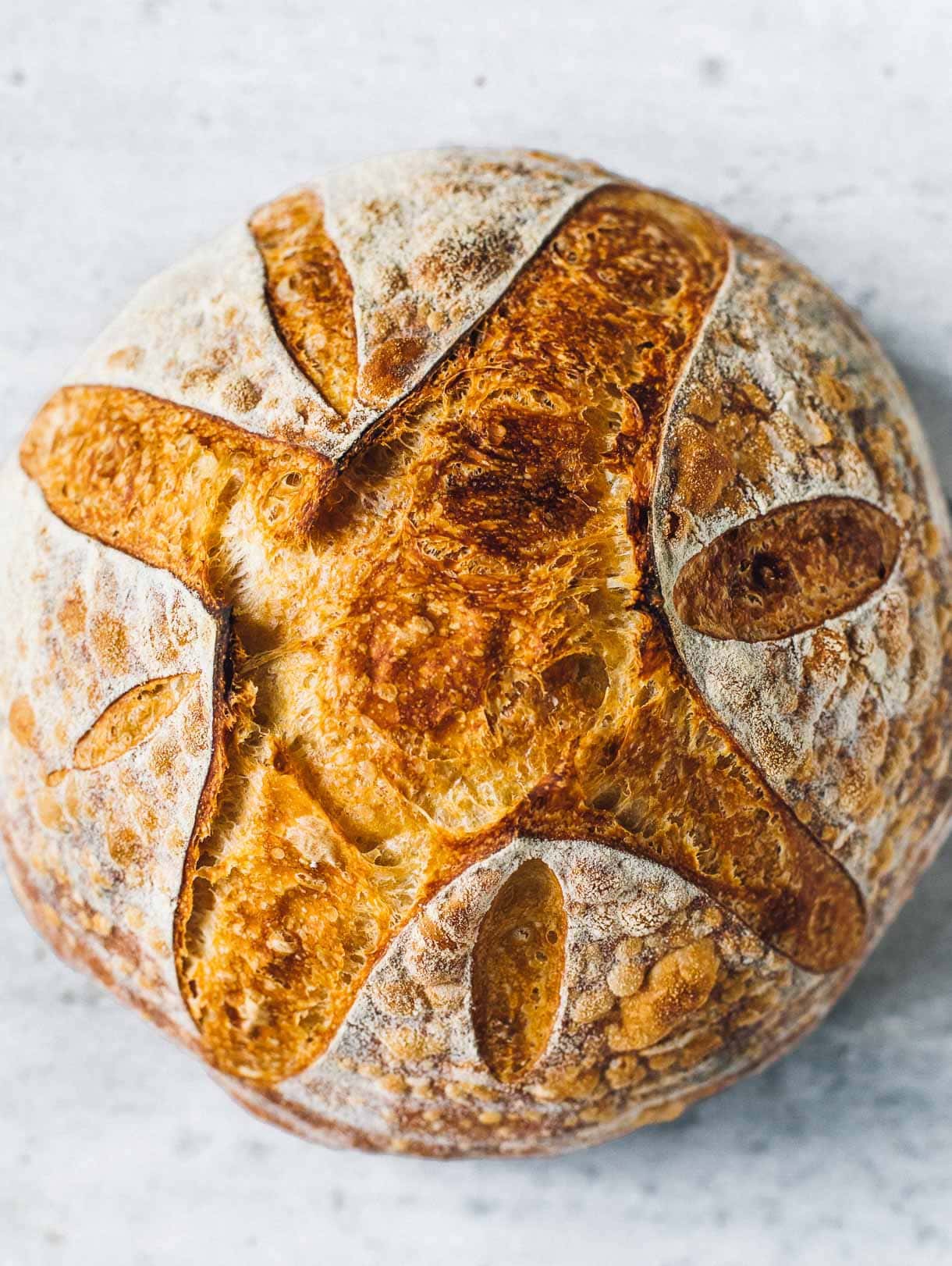Basic All-Purpose Flour Sourdough Bread (soft crumb!)
4.7
(79)
Your folders
Your folders
Prep Time: 5 minutes
Cook Time: 45 minutes
Total: 770 minutes
Servings: 1

Ingredients
Export 2 ingredients for grocery delivery
Instructions
Step 1
Add starter and water to a bowl. Whisk thoroughly until combined, with a fork. Add flour, and mix together first with the fork to start to incorporate, then with your hands until a shaggy dough is formed, and the bits of flour left just disappear. Sprinkle the salt on top and do not mix in, just leave it on top. Cover with a damp cloth.
Step 2
Autolyse: let dough sit for 45 minutes, covered and undisturbed.
Step 3
Bulk ferment + Stretch and Folds: Now you will knead the salt that is sitting on top, into the dough for about 1 min 15 seconds. There is no precise way to do this, just think of working the dough through your hands and up against the bowl, push and pull. You will start to feel the dough relax a bit around 1 minute. Continue for about 15 or 30 seconds more. Then complete your first set of stretch and folds around the bowl. Let rest for thirty minutes.
Step 4
After those 30 minutes pass, do another set of stretch and folds around the bowl. Repeat this rest + stretch and folds 2 more times.
Step 5
Now you will let sit, undisturbed and covered with a damp cloth, for about 6 hours at 70 degrees F. If the temperature in your home is above 70, this will take less time, vice versa. You will know it is finished with its bulk ferment when the dough has risen just short of doubling, is smooth and puffy on top, with a few bubbles. It will not be as jiggly as some breads that use more water.
Step 6
At this point, lightly dust your work surface with flour. Put dough onto the work surface, and pre-shape. Let sit for 15 minutes on your work surface.
Step 7
Then shape your dough, using this method as a guide.
Step 8
Place dough into your flour dusted banneton, (or flour dusted linen lined banneton) seam side up. (Optional, you can wait 15 minutes after placing it in banneton, and pinch the perimeters of the dough into the center to hold the shape even more, called stitching.) The dough will now go through its final rise. You can do this on the counter, which will take about 2 hours at 70 degrees F for the dough to puff up and be jiggly. It will not double. OR you can do the final rise overnight in the refrigerator, with the banneton covered in a plastic bag or with a very damp cloth. You need this for holding moisture in.
Step 9
Time to bake. Preheat your oven to 450 degrees F, with your dutch oven preheating inside the oven. When the oven is preheated, flip your dough out gently onto parchment paper and score your dough. If you did the final rise in the refrigerator, take it straight from fridge, to scoring, to dutch oven.
Step 10
Then put dough into the dutch oven on the parchment, and cover. Slide dutch oven into oven. Bake for 20 minutes, then remove cover.
Step 11
Turn heat down to 430 degrees F, and bake for 25 more minutes, until crust is golden brown and crackly. Remove from oven, and remove bread from dutch oven and place onto a cooling rack.
Step 12
Wait AT LEAST one hour to cut into bread. Otherwise, the interior will be gummy.